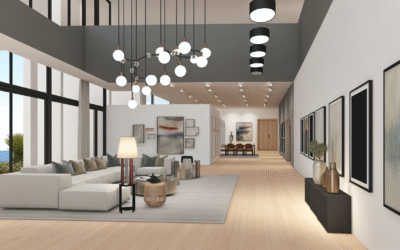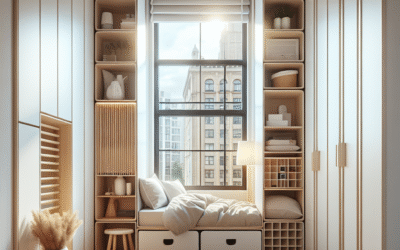
Fusion of Form: How to Blend Sculptural Wall Art with Paintings for a Stunning Home Aesthetic
Are you tired of your empty walls failing to inspire? The perfect fusion of form can transform those plain surfaces into stunning showcases of artistic expression. This article explores how to blend sculptural wall art with paintings, crafting a cohesive aesthetic that elevates your home.
As we navigate through the nuances of design, you’ll learn about the principles of mixing media, selecting complementary pieces, and achieving a balanced look that speaks to your personal style. Let’s dive deep into how to harmoniously combine these two dynamic forms for breathtaking results.
Understanding the Basics of Wall Art
Before we dive into blending, it’s essential to understand the components of wall art:
Types of Wall Art
- Sculptural Art: Three-dimensional pieces that add depth to walls.
- Paintings: Two-dimensional art that offers a variety of styles and techniques.
- Mixed Media: Art that combines various materials for unique textures.
Color Theory
Color plays a crucial role. When selecting sculptural pieces to complement paintings, consider:
- Color Wheel Relationships
- Warm vs. Cool Tones
- Neutral Backgrounds
Choosing Complementary Pieces
Harmony is key when choosing art. Here’s how to create a cohesive environment:
Identifying Themes
Decide on a common theme that resonates with your personality and the mood you wish to convey. Some effective themes include:
- Nature-inspired
- Abstract Forms
- Cultural Influences
Scale and Proportion
Mixing different sizes can create visual interest, but it’s crucial to maintain balance. Here are some tips:
- Use larger pieces as focal points.
- Incorporate smaller pieces to fill gaps.
- Consider the height at which artwork is hung.
Creating a Focal Point
Every great design starts with a statement piece. Here’s how to establish one:
Strategic Placement
Position your main accent piece where it draws the eye first. Factors to consider:
- Central Wall Spaces
- Near Lighting Features
- Open Spaces for Viewing
Innovative Pairing Techniques
Blending mediums can be tricky. Here are actionable insights that can guide you:
Layering Techniques
Interplay with depth by placing sculptural pieces in front of paintings:
- Use shadow boxes for depth.
- Hang paintings behind sculptures for layering effects.
Textural Interplay
Combine smooth paintings with textured sculptures for added contrast:
- Choose paintings with flat surfaces.
- Use wire, wood, or fabric for texture in sculptures.
Maintaining Balance in Design
Balance is crucial for visual appeal:
Symmetrical vs. Asymmetrical Balance
Decide on a symmetry style, either traditional or modern. Consider these tips for creating effective balance:
- Symmetrical: use matching artworks flanking a central piece.
- Asymmetrical: balance larger pieces with several smaller ones across the space.
Real-World Examples and Case Studies
Understanding theory is essential. Let’s look at some successful blends of wall art:
Case Study: A Modern Loft
A designer successfully fused sculptural pieces with abstract paintings by:
- Choosing bold colors that echoed the sculptures.
- Layering sculptures on open shelving against a monochromatic backdrop.
DIY Tips and Tricks for Art Enthusiasts
If you’re eager to create your own art display, consider these DIY tips:
Budget-Friendly Options
Affordable sources to find art pieces include:
- Local markets and studios
- Online platforms like Etsy
- Thrift shops for unique finds
FAQs About Blending Sculptural Wall Art and Paintings
Can I mix different art styles in one space?
Yes, mixing different styles can create an eclectic look. Just ensure they share a common theme or color palette.
How do I choose the right size for wall art?
Consider the wall space and surrounding furniture. Larger pieces work well as focal points, while smaller ones complement them.
What materials work best for sculptural wall art?
Popular materials include wood, metal, clay, and glass. Each brings different textures to your space.
Blending sculptural wall art with paintings offers a unique and vibrant aesthetic for your home. By understanding basic principles like color theory, balance, and thematic consistency, you can master this artful fusion. Remember, every piece should resonate with your personality and the desired atmosphere of your space. Start creating your stunning environment today!
What are you waiting for? Explore local galleries, shop online, or even create your pieces!
Content Disclaimer
The information provided in this article is for educational purposes only and is not a substitute for professional advice.
Categories
- Accent Walls & Ceilings (61)
- Art Curation & Gallery (62)
- Bedding Style Trends (68)
- Bedroom Makeover (81)
- Bohemian & Eclectic Styles (58)
- DIY & Budget-Friendly Decor (64)
- Eco-Friendly Design (62)
- Furniture Care (71)
- Home Decor & Design Ideas (162)
- Home Wellness Spaces (59)
- Integrated Outdoor Living (67)
- Japandi Style (61)
- Kids and Nursery Decor (59)
- Living Room Decor (79)
- Mix & Match Techniques (73)
- Modern & Contemporary Design (66)
- Rug Sizing & Placement (73)
- Scandinavian Design Inspiration (20)
- Seasonal Home Decor (79)
- Small Space Solutions (73)
- Wall Art & Painting Tips (77)
Recent Comments
Archives
Product Gallery
-
Large Area Green Rugs for Bedroom Nordic Living Room Decoration Shaped Carpet Irregular Plush Lounge Rug Home Thick Washable Mat
Rated 5.00 out of 5$36.00 – $225.00Price range: $36.00 through $225.00 -
Nordic Style Rugs for Bedroom Morandi Living Room Decoration Carpet Large Area Geometry Lounge Rug Home Cloakroom Non-slip Mat
Rated 5.00 out of 5$26.00 – $387.00Price range: $26.00 through $387.00 -
Irregular Shapes Living Room Decoration Carpet Modern Style Rugs for Bedroom Home Thicken Plush Rug Fluffy Soft Lounge Floor Mat
Rated 4.83 out of 5$37.00 – $225.00Price range: $37.00 through $225.00














